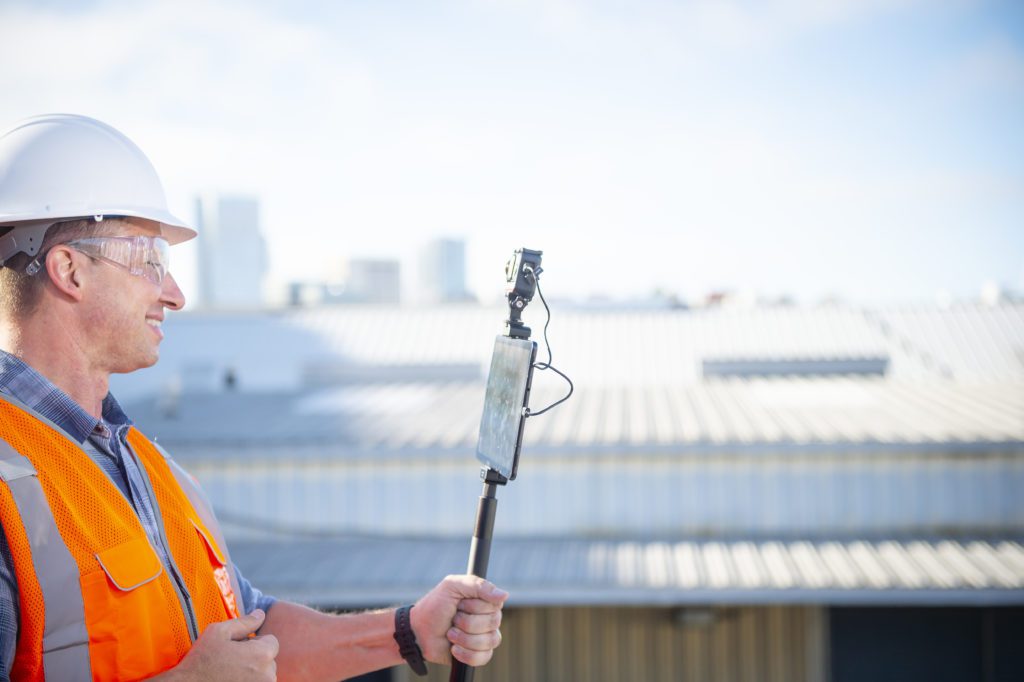Remote Site Visits, or Remote Tours, were once a necessity during the toughest parts of the COVID-19 lockdown. Now, however, companies are leveraging emerging remote collaboration technology to integrate remote site visits as a standard business and customer acquisition practice.
What is a Remote Site Visit?
Remote site visits allow an organization to bring potential customers, project stakeholders, collaborators, or stakeholders to experience a physical location without the need to travel.
While almost any organization can conduct a remote site visit, innovative organizations that routinely conduct site-specific visits (such as facility walkthroughs, warehouse tours, or site surveys) can stand to benefit the most.
Leveraged correctly, remote site visits can help organizations implement a hybrid collaboration strategy, which involves a mix of in-person and remote collaboration techniques to save money and drive efficiency.
Since there are differences in being remote versus physically present, consider the following best practices for remote site visits:
Choose the Right Tools for the Right Job
There are a variety of remote collaboration tools that are purpose-built for specific enterprise uses.
If the purpose of your visit is to provide customers, stakeholders, etc.. with as close to an in-person experience of the physical environment as possible, then 360° remote collaboration is the ideal tool.
360° remote site visits provide viewer autonomy, which means each visitor can control their point of view and interact with people and places on site as if physically present.
“By using what feels like in-person, remote live features, the 360° experience gives our customers that feeling like they are walking through the facility.”
– Lou Hughes, CEO of Beyonics
Here you can see how Beyonics leveraged 360° remote collaboration to close a crucial deal using remote site visits.

Ensure and Double Check Connectivity
Lagging video and connection challenges are frustrating and distracting. That’s why it’s crucial to understand and double check your facility or site’s connectivity requirements.
Avatour, for example, works on both WiFi and LTE/5G networks for when WiFi is spotty or limited.
It is advisable to run through a “mock tour” with your team a week before the official remote site visit. This will help provide an understanding of how connection will function the day of and help your team address any issues.

Prepare Assets for Sharing, Collaboration, and Annotation
While a remote site visit can be a great way to introduce an organization’s physical space to potential customers or stakeholders, there are several other opportunities for sharing and collaboration.
On a typical, in-person visit, it is common to share handouts, collaboration documents, checklists, etc.. Providing and referencing information in real time helps visitors stay on the same page and understand any crucial details related to the tour.
Remote tour software, such as Avatour, lets hosts share documents, annotate, and pull up other digital assets (such as photo and video) without disrupting the experience of the tour.
Since Avatour provides a seamless connection between the physical environment and the shareable assets, it’s important to prepare and organize any assets needed for the tour.
Define SOP for Remote Site Visits (including roles)
It’s important to define the roles of those involved in the remote site visit so you can improve your workflow and eliminate any potential confusion.
It’s advisable to create clear guidelines for remote site visits such as recording policy, role of host, moderator, etc. Plan the flow of movement throughout the site so that the experience can feel seamless to your potential customers or stakeholders.
As you improve on hosting remote site visits, consider questions from previous sessions so you can be sure to address them during another visit.
Benefits of Remote Site Visits
Save Money
Hosting routine remote site visits can help companies save 80% on travel costs. This is especially true for global companies, who perhaps serve an extensive network of customers. Coordinating international trips is time consuming and expensive, especially with inflation on the rise.
Click here to see how logistics leader DB Schenker saved money on travel while driving innovation with virtual warehouse visits.
Save Time
Traveling for site visits can mean a loss of productivity for those traveling. It also can cause disruption at facilities and the employees on site. Remote site visits not only help companies close deals faster (with the ability to bring customer on site anytime, anywhere), but they also help everybody save time lost to travel and boost efficiency.
Reduce Carbon Emissions
Leaders like DB Schenker are hosting virtual warehouse tours to drive innovation and sustainability. While most organizations recognize that climate change is a problem, there will be a growing demand for companies to reduce their carbon emissions. When it comes to corporate emissions, business travel is a clear culprit.
By reducing the number of flights your personnel and customers are taking per year, your organization can significantly cut back on annual carbon emissions.
About Avatour
Avatour is the remote collaboration platform for site meetings. We’re committed to creating a future beyond distance. To learn more about what our platform can offer your business, click here to book a demo.
